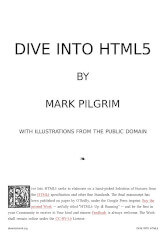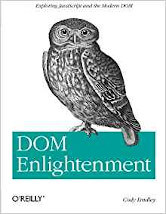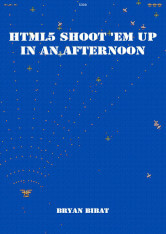Last Updated on November 22, 2025
HyperText Markup Language (HTML) is used to create web pages and other information that is intended for display in a web browser. Each markup code is known as an element or a tag. The web developer uses these elements to describe and define the content of a webpage. The elements tell the web browser how to display the information (both text and images) to the user.
HTML has seen a number of revisions. HTML5 is the fifth revision of the HTML standard. HTML5 makes for a rich user experience with the canvas and SVG elements, native elements video and audio which allow video and audio to be placed directly in the HTML code. Other important new features include web storage, which offers a more secure and faster alternative than cookies, and geolocation, the heart of every location-based application.
HTML is the markup language, Cascading Style Sheets (CSS) determines how it is rendered, and JavaScript is the programming language. HTML5, CSS3, and JavaScript are open, efficient and reliable web standards and allow web designers to create advanced web sites with creative graphics, animations, transitions and typography.
Here’s our recommended books to learn HTML.
1. Dive into HTML5 by Mark Pilgrim
 Dive Into HTML5 elaborates on a hand-picked selection of features from the HTML5 specification and other fine standards. This concise guide is a complete and authoritative book on the subject.
Dive Into HTML5 elaborates on a hand-picked selection of features from the HTML5 specification and other fine standards. This concise guide is a complete and authoritative book on the subject.
This book focuses solely on HTML5, not previous versions of HTML, and not any version of XHTML.
Mark Pilgrim works as a developer advocate for Google, specializing in open source and open standards. The community has made contributions to the book.
Chapters cover:
- Introduction – explains that HTML5 is a collection of individual features such as canvas, video, local storage, and geolocation, that it’s easy to ‘upgrade’ to HTML5, and well supported by popular web browsers.
- History of HTML5 – includes an account of why HTML piques the author’s interest.
- Detecting HTML5 Features – looks at detection techniques, Modernizr (an HTML5 detection library), canvas, canvas text, video, video formats, local storage, web workers, offline web .applications, geolocation, input types, placeholder text, form autofocus, microdata, and HTML5 history API.
- What Does It All Mean? – takes an HTML page that has absolutely nothing wrong with it, and improves it.
- Let’s Call It a Draw(ing Surface) – focuses on the canvas element.
- Video in a Flash – HTML5 defines a standard way to embed video in a web page, using a <video> element.
- You Are Here (And So Is Everybody Else) – looks at geolocation, the art of figuring out where you are in the world and (optionally) sharing that information with people you trust.
- Persistent local storage – HTML5 storage, a specification named Web Storage. It’s a way for web pages to store named key/value pairs locally, within the client web browser.
- Taking it Offline – talks about offline web applications, the cache manifest, the offline application cache, and builds the Halma game (introduced in the canvas chapter) offline.
- A Form of Madness – looks at web forms and the new input types used in HTML5.
- “Distributed”, “Extensibility,” And Other Fancy Words – focuses on microdata, annotates the DOM with scoped name/value pairs from custom vocabularies.
- Manipulating History for Fun & Profit – the HTML5 history API.
- Appendix: The All-In-One Almost-Alphabetical Guide to Detecting Everything.
- Appendix: HTML5 Peeks, Pokes, and Pointers.
This online work is released under the CC-BY-3.0 license. There’s also a printed version to buy titled “HTML5: Up & Running” which is not released under a freely distributable license.
2. DOM Enlightenment by Cody Lindley
 DOM Enlightenment is an exhaustive book written about Document Object Model (DOM) scripting without the use of a library/framework.
DOM Enlightenment is an exhaustive book written about Document Object Model (DOM) scripting without the use of a library/framework.
Chapters cover:
- Node Overview – covers node object types, sub-node objects inherit from the Node object, properties and methods for working nodes, identifying the type and name of a node, getting a nodes value, creating element and text nodes using JavaScript methods, creating and adding element and text nodes to the DOM using JavaScript strings, extracting parts of the DOM tree as JavaScript strings, and more.
- Document Nodes – including HTMLDocument properties and methods, document child nodes, and detecting DOM specifications/features using document.implementation.hasFeature().
- Element Nodes – Elements in an HTML document all have a unique nature and as such they all have a unique JavaScript constructor that instantiates the element as a node object in a DOM tree.
- Element Node Selecting – leverages querySelector() and getElementById() to select an element node from the HTML document.
- Element Node Geometry & Scrolling Geometry.
- Element Node Inline Styles.
- Text Nodes – shows the reader how to create and inktext text nodes, manipulate text modes, remove markup, split a text node.
- DocumentFragment Nodes – the creation and use of a DocumentFragment node provides a light weight document DOM that is external to the live DOM tree.
- CSS Style Sheets & CSS rules – examining CSSStyleRule, inserting and deleting CSS rules in a style sheet, creating a new inline CSS style sheet and more.
- JavaScript in the DOM – inserting and executing JavaScript.
- DOM Events – looks at the event flow, adding and removing event listeners, stopping the event flow, and custom events.
- Creating dom.js – a wishful jQuery inspired DOM Library for modern browsers.
The DOM Enlightenment HTML version is released under a Creative Commons Attribution-Noncommercial-No Derivative Works 3.0 unported license.
3. HTML5 Shoot ’em Up in an Afternoon by Bryan Bibat
 HTML5 Shoot ’em Up in an Afternoon is targeted at individuals who want to learn the basic concepts behind creating games. As a workshop manual, it’s also for experienced developers interested in introducing those concepts to those people.
HTML5 Shoot ’em Up in an Afternoon is targeted at individuals who want to learn the basic concepts behind creating games. As a workshop manual, it’s also for experienced developers interested in introducing those concepts to those people.
The book introduces the reader to HTML5 and game development by constructing a shoot-em-up game similar to the classic game 1942. The book offers good coverage on sprites, player actions, object groups, refactoring, expanding the game, and more.
This work is licensed under the Creative Commons Attribution-NonCommercial-ShareAlike 3.0 Unported License.
Next page: Page 2 – HTML5 Quick Learning Guide and more books
Pages in this article:
Page 1 – Dive into HTML5 and more books
Page 2 – HTML5 Quick Learning Guide and more books
All books in this series:
| Free Programming Books | |
|---|---|
| Ada | ALGOL-like programming language, extended from Pascal and other languages |
| Agda | Dependently typed functional language based on intuitionistic Type Theory |
| Arduino | Inexpensive, flexible, open source microcontroller platform |
| Assembly | As close to writing machine code without writing in pure hexadecimal |
| Awk | Versatile language designed for pattern scanning and processing language |
| Bash | Shell and command language; popular both as a shell and a scripting language |
| BASIC | Beginner’s All-purpose Symbolic Instruction Code |
| C | General-purpose, procedural, portable, high-level language |
| C++ | General-purpose, portable, free-form, multi-paradigm language |
| C# | Combines the power and flexibility of C++ with the simplicity of Visual Basic |
| Clojure | Dialect of the Lisp programming language |
| ClojureScript | Compiler for Clojure that targets JavaScript |
| COBOL | Common Business-Oriented Language |
| CoffeeScript | Transcompiles into JavaScript inspired by Ruby, Python and Haskell |
| Coq | Dependently typed language similar to Agda, Idris, F* and others |
| Crystal | General-purpose, concurrent, multi-paradigm, object-oriented language |
| CSS | CSS (Cascading Style Sheets) specifies a web page’s appearance |
| D | General-purpose systems programming language with a C-like syntax |
| Dart | Client-optimized language for fast apps on multiple platforms |
| Dylan | Multi-paradigm language supporting functional and object-oriented coding |
| ECMAScript | Best known as the language embedded in web browsers |
| Eiffel | Object-oriented language designed by Bertrand Meyer |
| Elixir | Relatively new functional language running on the Erlang virtual machine |
| Erlang | General-purpose, concurrent, declarative, functional language |
| F# | Uses functional, imperative, and object-oriented programming methods |
| Factor | Dynamic stack-based programming language |
| Forth | Imperative stack-based programming language |
| Fortran | The first high-level language, using the first compiler |
| Go | Compiled, statically typed programming language |
| Groovy | Powerful, optionally typed and dynamic language |
| Haskell | Standardized, general-purpose, polymorphically, statically typed language |
| HTML | HyperText Markup Language |
| Icon | Wide variety of features for processing and presenting symbolic data |
| J | Array programming language based primarily on APL |
| Java | General-purpose, concurrent, class-based, object-oriented, high-level language |
| JavaScript | Interpreted, prototype-based, scripting language |
| Julia | High-level, high-performance language for technical computing |
| Kotlin | More modern version of Java |
| LabVIEW | Designed to enable domain experts to build power systems quickly |
| LaTeX | Professional document preparation system and document markup language |
| Lisp | Unique features - excellent to study programming constructs |
| Logo | Dialect of Lisp that features interactivity, modularity, extensibility |
| Lua | Designed as an embeddable scripting language |
| Markdown | Plain text formatting syntax designed to be easy-to-read and easy-to-write |
| Objective-C | Object-oriented language that adds Smalltalk-style messaging to C |
| OCaml | The main implementation of the Caml language |
| Pascal | Imperative and procedural language designed in the late 1960s |
| Perl | High-level, general-purpose, interpreted, scripting, dynamic language |
| PHP | PHP has been at the helm of the web for many years |
| PostScript | Interpreted, stack-based and Turing complete language |
| Prolog | A general purpose, declarative, logic programming language |
| PureScript | Small strongly, statically typed language compiling to JavaScript |
| Python | General-purpose, structured, powerful language |
| QML | Hierarchical declarative language for user interface layout - JSON-like syntax |
| R | De facto standard among statisticians and data analysts |
| Racket | General-purpose, object-oriented, multi-paradigm, functional language |
| Raku | Member of the Perl family of programming languages |
| Ruby | General purpose, scripting, structured, flexible, fully object-oriented language |
| Rust | Ideal for systems, embedded, and other performance critical code |
| Scala | Modern, object-functional, multi-paradigm, Java-based language |
| Scheme | A general-purpose, functional language descended from Lisp and Algol |
| Scratch | Visual programming language designed for 8-16 year-old children |
| SQL | Access and manipulate data held in a relational database management system |
| Standard ML | General-purpose functional language characterized as "Lisp with types" |
| Swift | Powerful and intuitive general-purpose programming language |
| Tcl | Dynamic language based on concepts of Lisp, C, and Unix shells |
| TeX | Markup and programming language - create professional quality typeset text |
| TypeScript | Strict syntactical superset of JavaScript adding optional static typing |
| Vala | Object-oriented language, syntactically similar to C# |
| VHDL | Hardware description language used in electronic design automation |
| VimL | Powerful scripting language of the Vim editor |
| XML | Rules for defining semantic tags describing structure ad meaning |
